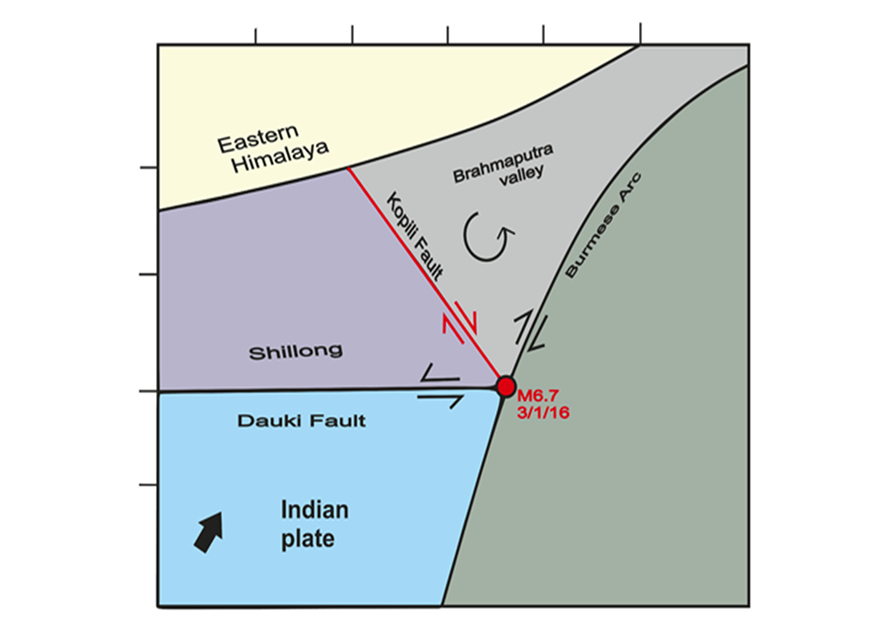Detailed geophysical and geological investigations to identify copper lead and zinc mineralization around Ambaji, Banaskantha district are in progress.

 Skip To Main Content
Skip To Main Content
The Burmese arc is a peculiar plate boundary where there exists an eastward subducted Indian slab, but the current tectonics of the region are predominantly governed by a northward strike-slip motion of the Indian plate past the Burmese plate, as evidenced by seismic and Global Positioning System data. The shallower portion of the dipping Indian slab is characterized mostly by earthquakes with strike-slip type focal mechanisms with roughly northwest- and northeast-trending fault planes, although there is no clear evidence for the choice of rupture planes. In the present study, we use teleseismic broadband waveforms to model the rupture propagation of an Mw 6.7 strike-slip earthquake of 3 January 2016 that occurred in the Indian city of Imphal, and infer the fault-plane orientation. The result indicates a right-lateral strikeslip motion along a N21°W plane, which is confirmed by both waveform fitting and distribution of aftershocks. Interestingly, this earthquake occurred at the intersection of three major faults in this region- the Churachandpur Mao fault bounding the India and Burma plates, the Dauki fault south of the Shillong plateau, and the Kopili fault separating the Shillong plateau from the Brahmaputra valley. This raises various possibilities for interpreting this event. However, based on the finite-fault inversion, we infer that this earthquake occurred on the Kopili fault running northwest-southeast from Bhutan Himalaya down to the Burmese arc, and manifested as a right-lateral strike-slip motion in response to the northward motion of the Indian plate and a counterclockwise rotation of the Brahmaputra valley. We further interpret that the overall deformation in the Burmese arc region is accommodated by northward slivering of the eastward subducted Indian lithospheric slab along a series of northwest- to north–south-trending right-lateral strike-slip faults from west to east as the Indian plate moves northward past the Burma and Sunda blocks.

The proposed model of deformation along the Kopili fault in conjunction with the active tectonics of the Indo-Burmese arc.
Singh,A. P., P. C. Rao, M. R. Kumar, M.C. Cheng, and L. Zhao (2017), Bulletin of the Seismological Society of America, 107(2), 1041–1047
Copyright © 2017 - All Rights Reserved by - Official Website of Institute of Seismological Research, Government Of Gujarat, India.
Note: Content on this website is published and managed by Institute of Seismological Research.
For any query regarding this website, please contact the web information manager Mr. Jignesh Patel (Technical Officer) : email id-dg-isr[at]gujarat[dot]gov[dot]in
